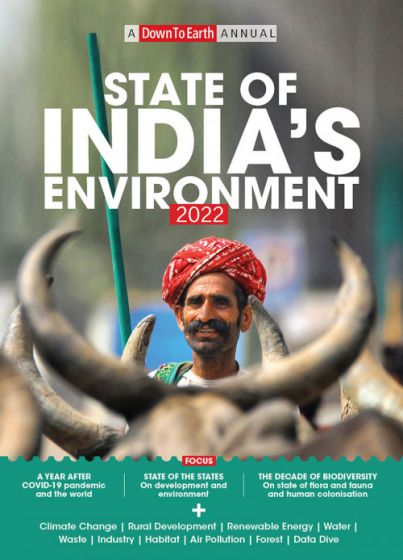India is identifying and defining forests wrongly, say experts speaking at AAD 2022
A recent analysis by Sunita Narain in Down To Earth says the new Forest Survey Report of 2021 records a forest area of 77.53 million hectare (mha) in India, but a forest cover on only 51.66 mha. Where has 25.87 mha of forests gone? Why is there no record of whether they exist or not, or in what condition?
The answer to this question lies in “how forests are defined”, says M D Madhusudan, one of the speakers at CSE’s 2022 Anil Agarwal Dialogue, a national conclave of journalists
New Delhi/Nimli (Rajasthan), March 3, 2022: “While the India State of Forest Report (ISFR 2021) says forest cover has increased, a study of the Forest Survey of India maps shows otherwise,” says M D Madhusudan, Obaid Siddiqi Chair in the History and Culture of Science at the National Centre for Biological Sciences, Bengaluru. Madhusudan was speaking at Centre for Science and Environment’s (CSE) four-day national conclave, the Anil Agarwal Dialogue 2022, which was inaugurated by Union environment minister Bhupender Yadav on March 1, 2022.
For details of AAD 2022 and its presentations and proceedings (streamed live as well as recorded):
Narain’s assessment was focused on investigating why the India State of Forest Report 2021 does not explain what is happening to this huge tract of forest land – equal in size to the state of Uttar Pradesh. According to her: “There are states where over 30-50 per cent of the land classified as forests is ‘missing’ from the government’s assessment. Madhya Pradesh, for instance, has ‘lost’ nearly three million ha. This is the real story of forest loss in our country – and itshould worry us enormously.”
Madhusudan, in his address at the AAD session, felt this was a question of erroneous identification, categorisation and definition. He says: “Tea estates, coconut plantations and housing colonies in cities have been classified as forests -- even desert areas have been classified as open forests. There are no technical constraints in classifying forests – we have the technical capacity to differentiate between different kinds of forests and plantations. I believe it has been an active choice to call coconuts and tea plantations forests.”
He elaborates further: “In 2001, efforts were made to ensure accuracy of data, but the opposite happened – due to the definition used, forest cover was shown to rise steeply, while there was no change or negative change in the forest cover on the ground!”
According to Madhusudan, “if you cut down a forest and grow tea, it can’t be called deforestation anymore because it was forest earlier and is forest later. We have lost the vocabulary to describe this change – this is why it is essential that these categories be differentiated.”
Narain adds: “The definition of ‘forest area’ outside recorded forests includes non-forest plantations. As the definition of a forest includes any hectare of land with a tree cover of 10 per cent or more, these areas would include plantations of all kinds, ranging from coconut to even tea. In fact, between the assessment 2019 and 2021, India’s forest cover has grown by a mere 0.2 per cent, and most of this ‘growth’ has been in ‘open forests’ (with canopy cover of 10-40 per cent), on lands outside recorded forest areas.”
She says that “the urgent agenda today is to reinvent forest management for the future; so that we build a wood-based future, but still protect the ecologically fragile areas.”
The Annual State of India’s Environment 2022 report is available here on sale Click here:
प्रेस विज्ञप्ति
अनिल अग्रवाल डायलॉग में विशेषज्ञों ने कहा, वनों को गलत तरीके से चिन्हित और परिभाषित कर रहा है भारत
For more details, contact: Sukanya Nair, The CSE Media Resource Centre, sukanya.nair@cseindia.org / +91-8816818864


Share this article